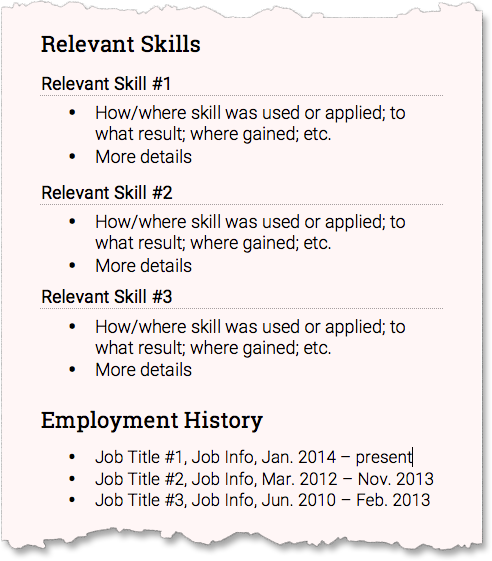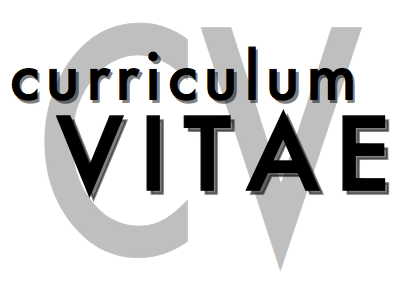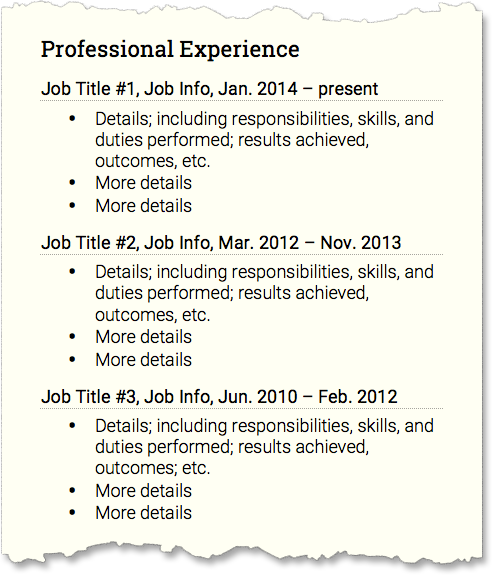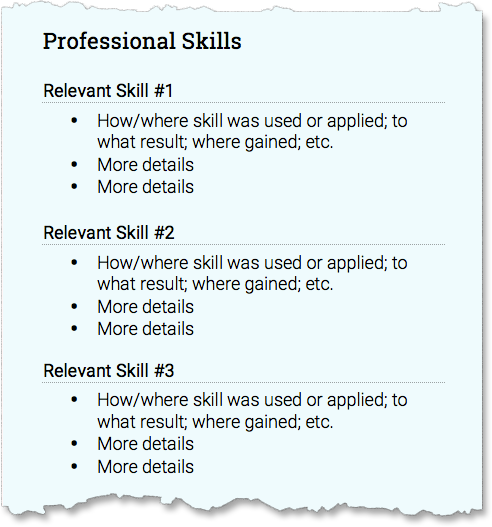Résumé Types
After reading these notes—at the least—you should
- know the difference between three types of traditional (print) resumes—chronological, skills, and combination
- have an idea which of the three traditional resume types you should use (either chronological, skills, or combination
As part of your Job Search Portfolio project, you must write a Traditional Résumé for the job listing you selected to use as the basis for this project. This means that based on you and your job-search-related history*, you will have to make a conscious decision about what type of traditional resume to write—a chronological resume, a skills (or functional) resume, or a combination (hybrid/mixed) resume.
Because most undergraduate students don’t have a lot of work history within their career field, or have lots of unrelated and/or short term retail or service employment, most undergraduate students should consider a skills or mixed resume.
As you think ahead to writing your resume, keep in mind that you MAY NOT use a resume template—MS Word or other templates WILL NOT be accepted. Instead, you must use good H.A.T.S. document design and design your resume yourself.
Types of Traditional (Print) Resumes
When you have a position in mind and need to create a new resume to appeal to that particular position and a particular audience, you should decide what kind of resume you need.
Chronological Resume:
Chronological resumes are traditional, formatted (see “H.A.T.S.”), print resumes that show your experience over time. Generally, you list items in reverse chronological order from the most recent. Because chronological resumes show experience in reverse chronological order, they demonstrate steady progression within a career and/or toward a position.
According to Chronological Resumes at Purdue’s OWL:
This style of organization is very conservative, and it is most useful for people who have work experience in positions which are closely related to their desired employment. This style is also most suited to people who have not had long periods of unemployment time between jobs. This format starts with the present, or most recent, job and progresses back in time.
|
when to use a
Chronological Resume |
PROS
|
CONS
|
|
|
|
![]()
Skills (Functional) Resume:
A skills resume is a traditional, formatted, (see “H.A.T.S.”) print resume that emphasizes skills you’ve used or developed by organizing the resume according to skills or abilities.
According to Skills Resumes at Purdue’s OWL:
The skills style is well suited to students who have gained valuable experience through a number of unrelated jobs and courses. This format is also appropriate for people who are making a significant change in careers. It emphasizes what you can do, not where you have worked. Applicable skills can be established through any activities that you feel will demonstrate your qualifications: courses, work, volunteer activities, personal life, and so forth.
For example, if you talked to customers as you waited on them at McDonald’s, investigated shipper’s presentations in a psychology course, you have demonstrated communications skills. However, try to match your skills to the position you are applying for. If you are applying for a Customer Service Representative position, you might list the McDonald’s and the moving company activities under a heading called Customer Service Skills.
|
when to use a
Skills Resume |
PROS
|
CONS
|
|
|
|
![]()

Combination (Hybrid/Mixed) Resume
A combination resume lists your skills and experience first, then employment history and education. It highlights the skills you have that are relevant to the job and provides a reverse chronological work history.
Use a Combination Resume when
- You want to highlight your transferable skills from numerous jobs or volunteer work.
- Your skills are your greatest strength.
- Your work experience differs from your desired career path.
- Most of your work had been contract, freelance, temporary, or unpaid (such as volunteer work, participation in student organizations, clubs, social groups, churches, etc.).
![]()
Other Types of Resumes
AI Optimized/Scannable Resume
An AI optimized resume (or scannable résumé, AI optimized resume, ATS resume) generally refers to a resume that is scanned into a computer using an optical character recognition (OCR) application or read by a computer (if already readable). OCR, or optical character recognition, applications turn scanned or digital images into searchable text. After a resume is scanned using OCR, it is turned into a searchable text file that employers can use to find ideal applicants by searching for keywords contained within the file/s.
For more on AI optimized/scannable resumes (including guidelines for formatting, including keywords, and optimizing with language shifts), please see the ENC 3213 AI Optimized/Scannable Resume Notes linked at the right and check out additional online resources such as “Scannable Resumes” from the Purdue Online Writing Lab (OWL).
Electronic Resumes
Inline Resume: An inline resume is plain text, copied and pasted into the body of an email. Preparation and sending of an inline resume is often more complicated than simply copying and pasting your resume text from a word processing application. Often, the conversation from rich text or formatted text to plain text creates strange line breaks, extra spaces, and unrecognized characters, or perhaps worse, email clients will attempt to recreate formatting in html.
To be absolutely sure your inline resume is clear and readable, paste as plain text (with no formatting), and keep styles such as bold, italic, and underline to an absolute minimum. Instead, use all capital letters for headings and plain text asterisks (*) instead of bullets.
Online Resumes: Online resumes are often included as part of an accessible online portfolio. Online resumes are written using CSS and html styling.

Curriculum Vitae (CV)
A curriculum vitae, vita, or CV, is an overview of your academic experience and accomplishments. According to the OED, loosely translated from Latin, curriculum vitae means “the course of one’s life.”
In the U.S., CVs are used to apply for academic jobs, awards, fellowships, scholarships, and grants. Overseas, the term “CV” is often used synonymously with “resume.”
More info at Curriculum Vitae (CV).
![]()


